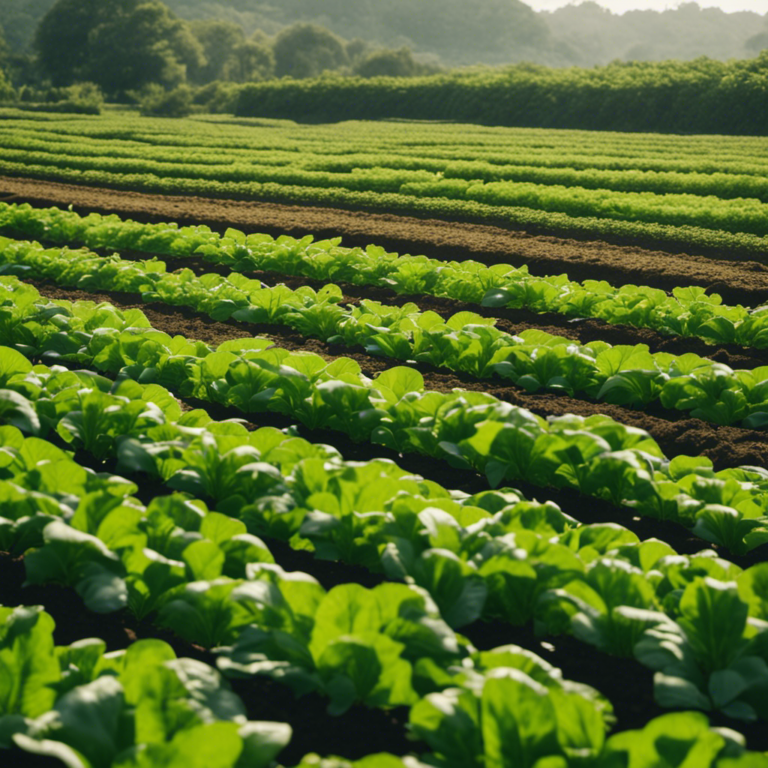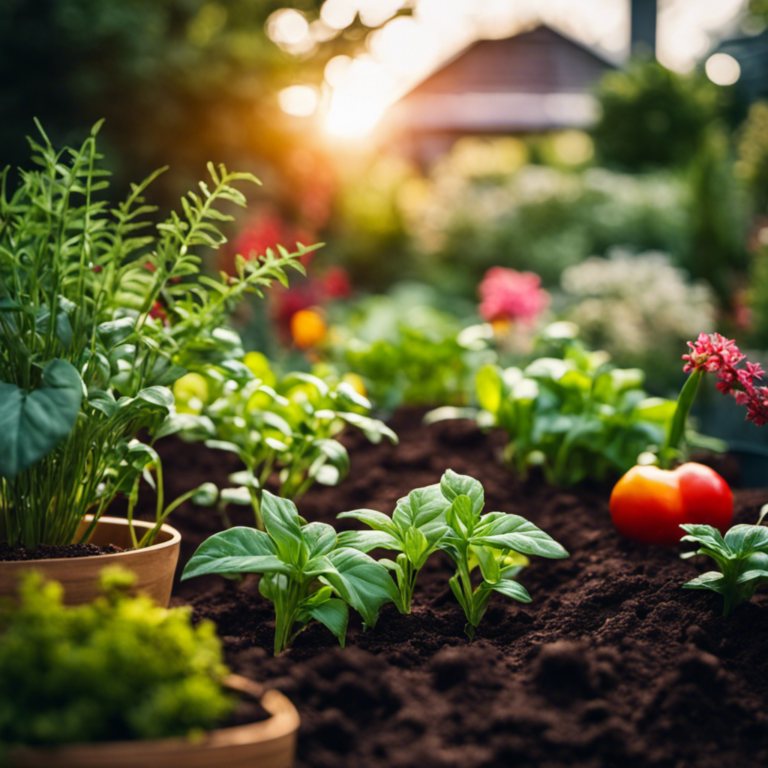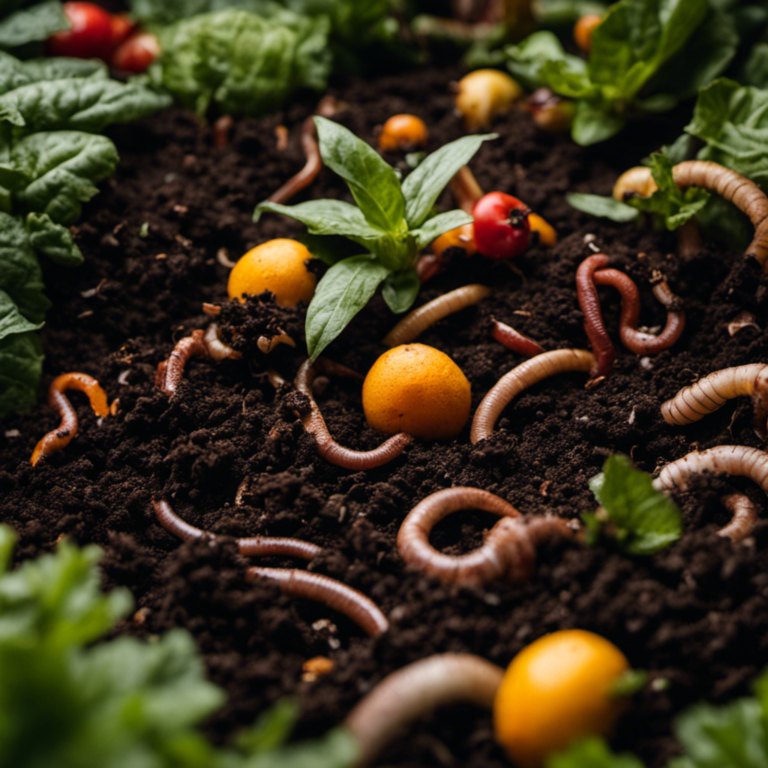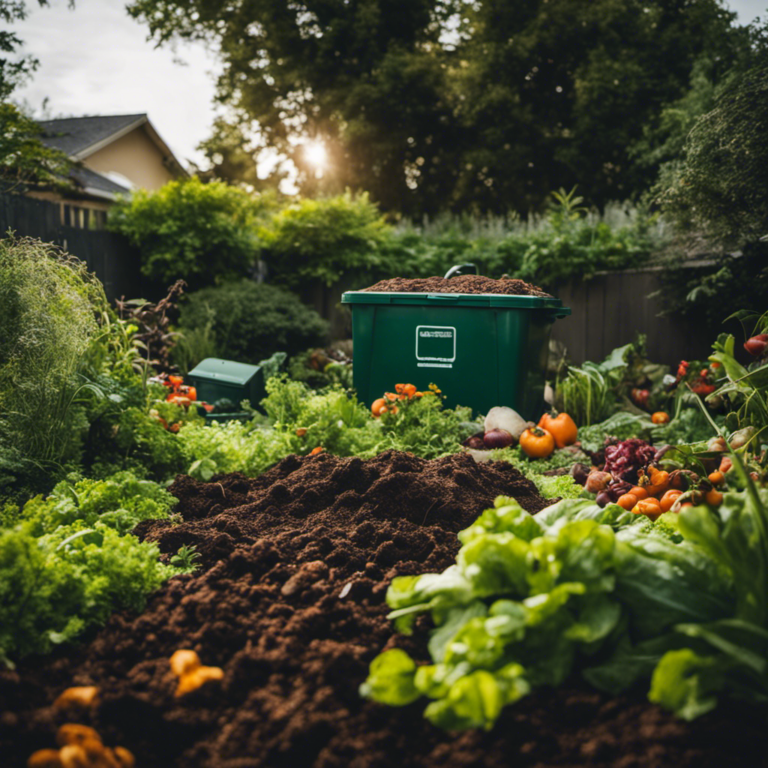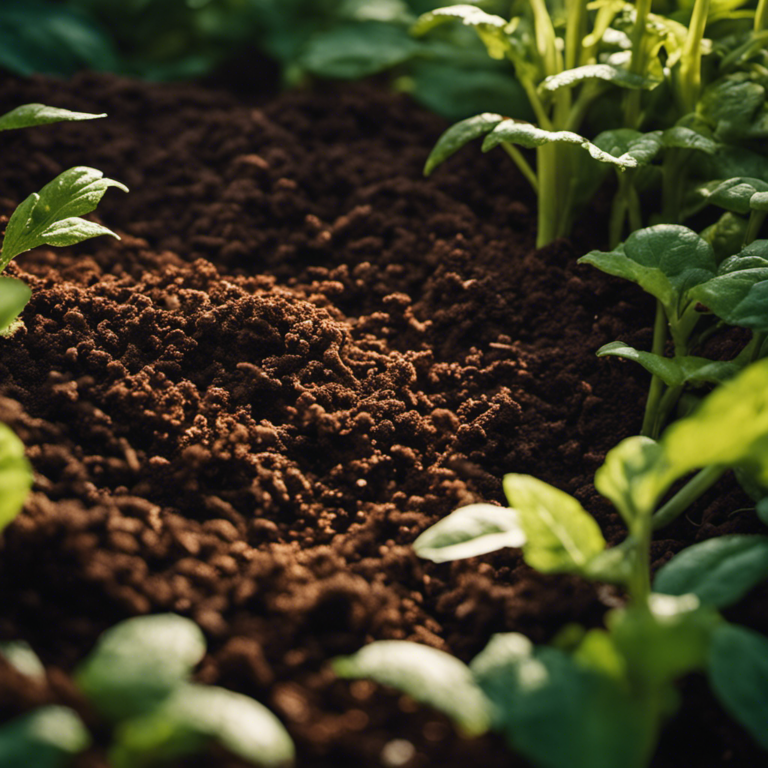Curious about what really happens in the world of organic farming? Join me on an exciting journey into the fascinating world of composting.
We’ll explore traditional methods as well as innovative techniques like vermicomposting and the bokashi system. Together, we’ll uncover the secrets behind transforming organic waste into nutrient-rich compost.
Get ready to dive deep into the hidden world of composting, where nature’s magic works to nourish the soil and benefit the environment.
Let’s roll up our sleeves and embark on this investigative adventure together.
Key Takeaways
In the realm of organic farming, composting is often regarded as the more adventurous side of agriculture. Farmers are constantly seeking innovative ways to transform waste into nutrient-rich soil, using methods such as vermicomposting and bokashi systems, alongside traditional approaches.
Although mulching and composting may seem like straightforward solutions, the process is far from simple. It involves getting down and dirty, dealing with unpleasant odors, and dedicating a significant amount of time. However, the rewards of having a healthy and sustainable farm make all the effort worthwhile.
So, the next time you encounter a farmer knee-deep in compost, remember that they’re embracing the more unconventional aspects of their work.
Traditional Composting Methods
One effective method for traditional composting is the use of a three-bin system. This system consists of three separate bins or compartments, each with a specific purpose in the composting process.
The first bin is where the initial stage of composting occurs. Here, organic waste is collected and mixed together. It’s important to maintain a proper balance of green and brown materials to ensure effective decomposition. This stage involves aerobic composting, where oxygen is present and aids in breaking down the organic matter.
Once the waste in the first bin has decomposed sufficiently, it’s transferred to the second bin. This is where anaerobic composting takes place. In this stage, decomposition continues without oxygen. Microorganisms break down the organic matter further, resulting in a stable and nutrient-rich compost.
The third bin is where the compost is left to mature, marking the final stage of the three-bin system. This step is crucial as it allows the compost to reach its full potential in terms of nutrient content and stability. Regular turning or mixing of the compost ensures proper aeration and even decomposition.
Using a three-bin system for composting is a proven and reliable method that yields excellent results. It enables efficient decomposition of organic waste through both aerobic and anaerobic processes, resulting in high-quality compost that can be used to enrich soil and support sustainable agriculture.
Vermicomposting Techniques
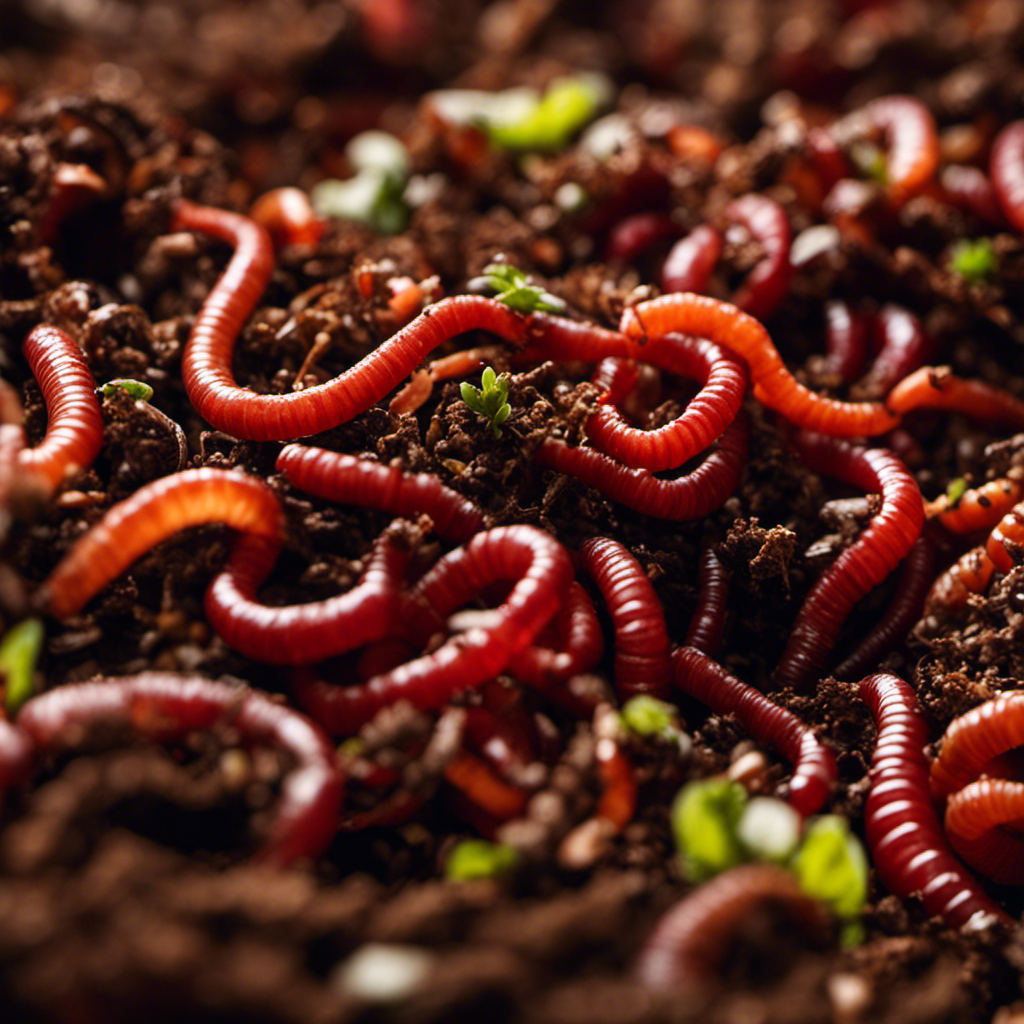
Vermicomposting is a method of organic waste management that’s gaining popularity among farmers and gardeners. It utilizes worms to break down organic matter and convert it into nutrient-rich compost. This sustainable solution helps reduce waste and enhance soil fertility.
Here are some key techniques for successful vermicomposting:
-
Worm Selection: Choose the right species of worms, such as Red Wigglers, that are voracious eaters and thrive in compost bins.
-
Bin Setup: Create a suitable environment for the worms by providing a well-ventilated container with bedding material like shredded newspaper or coconut coir.
-
Feeding: Feed the worms a balanced diet of kitchen scraps, vegetable peelings, and coffee grounds, while avoiding meat, dairy, and oily foods.
-
Moisture Control: Maintain the moisture level in the compost bin by periodically misting with water to ensure a damp but not soggy environment.
-
Harvesting: Harvest the vermicompost by separating the worms from the finished compost using techniques like the ‘light and dark‘ method or using a worm harvester.
By adopting these vermicomposting techniques, individuals can contribute to sustainable organic waste management while reaping the benefits of nutrient-rich compost for their plants.
Vermicomposting offers a practical and environmentally friendly solution that aligns with the principles of serving others and caring for our planet.
Bokashi Composting System
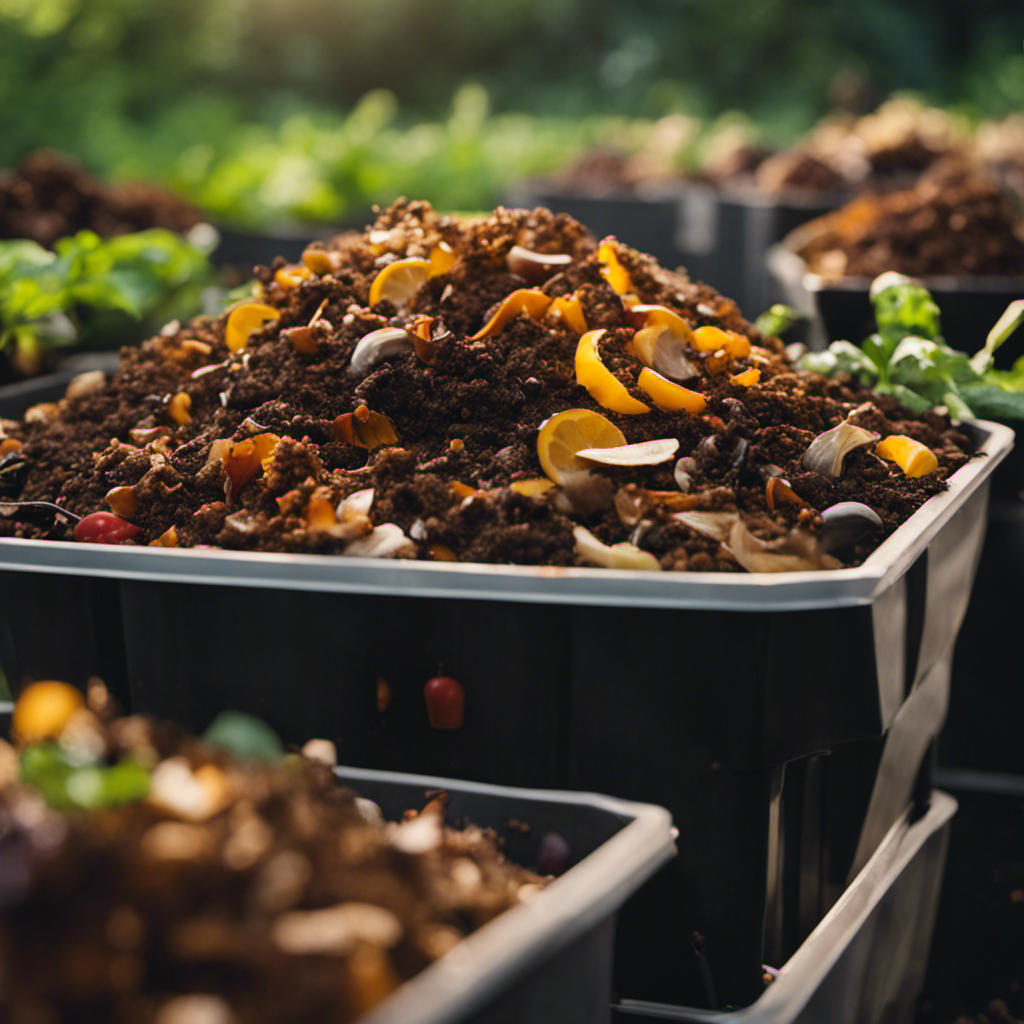
The Bokashi Composting System offers a unique approach to managing organic waste. This system utilizes a fermentation process that involves the use of effective microorganisms. Unlike traditional composting methods, Bokashi composting is an anaerobic process, meaning it occurs without oxygen. This allows for the breakdown of organic matter at a faster rate and the composting of a wider range of materials, including meat, dairy, and cooked food scraps.
To start the fermentation process, food waste is layered with a special Bokashi mix that contains effective microorganisms such as lactobacillus and yeast. These microorganisms work to break down the organic matter, converting it into nutrient-rich compost. Additionally, the Bokashi system produces a liquid byproduct called Bokashi tea, which serves as a natural fertilizer.
One of the key advantages of the Bokashi system is its ability to compost food waste quickly, reducing the amount of organic matter that ends up in landfills. Furthermore, the fermentation process helps eliminate odors and pests commonly associated with traditional composting methods.
Hot Composting for Faster Results
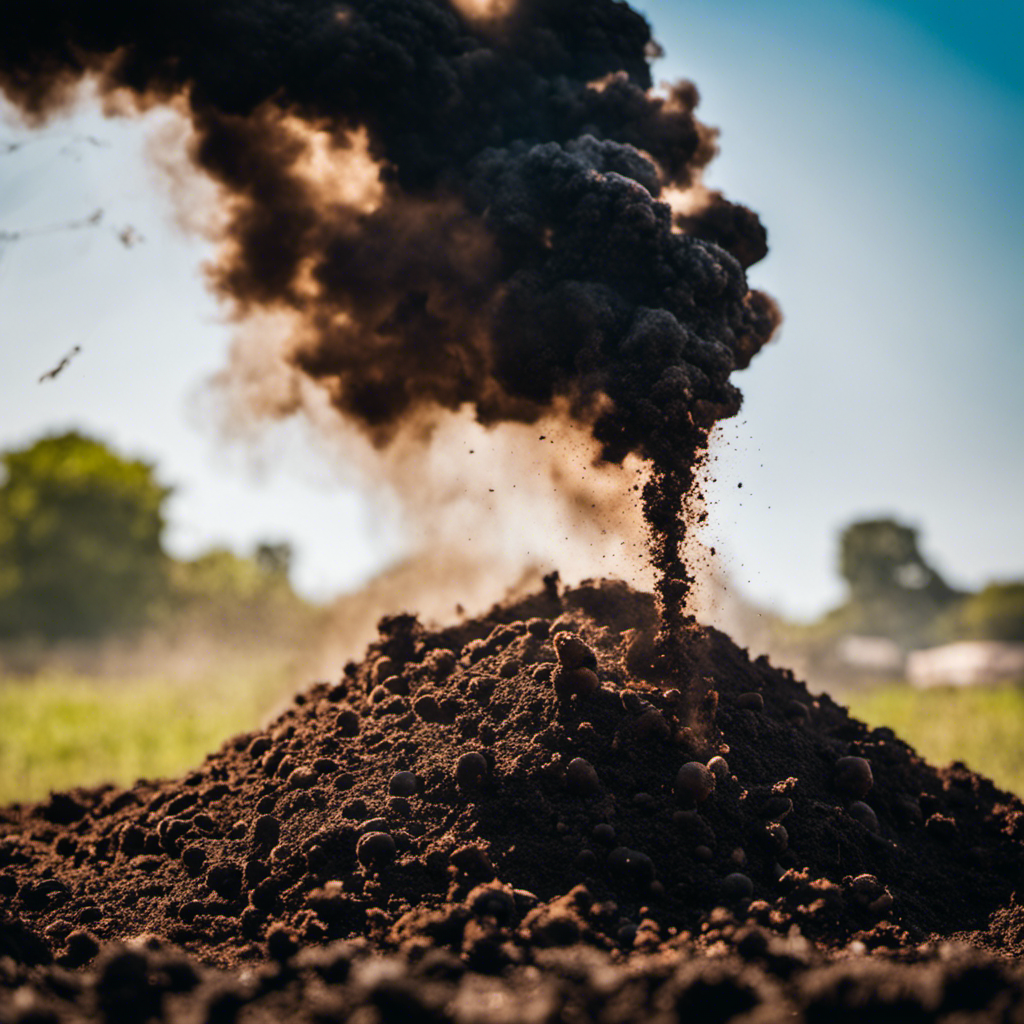
Hot Composting for Faster Results
Composting can be expedited by using a technique called hot composting. Hot composting creates optimal conditions for microorganisms to thrive, which accelerates the decomposition process. This method is especially beneficial for individuals who compost in urban areas or have limited space and time.
To begin hot composting, gather a combination of green and brown materials. Green materials include kitchen scraps, grass clippings, and fresh plant trimmings, while brown materials consist of dry leaves, straw, and shredded paper. It’s important to maintain a proper balance between these two types of materials to ensure effective decomposition.
Layer the materials in a compost bin or pile, ensuring the pile remains moist but not overly wet. Regularly turning the pile provides oxygen to the microorganisms and speeds up the decomposition process.
Maintaining the right temperature is crucial for successful hot composting. The pile should reach temperatures between 130 to 160 degrees Fahrenheit, which helps eliminate weed seeds and pathogens. Use a compost thermometer to monitor the temperature regularly and make adjustments as necessary to maintain the desired heat.
Mulching and Composting Together
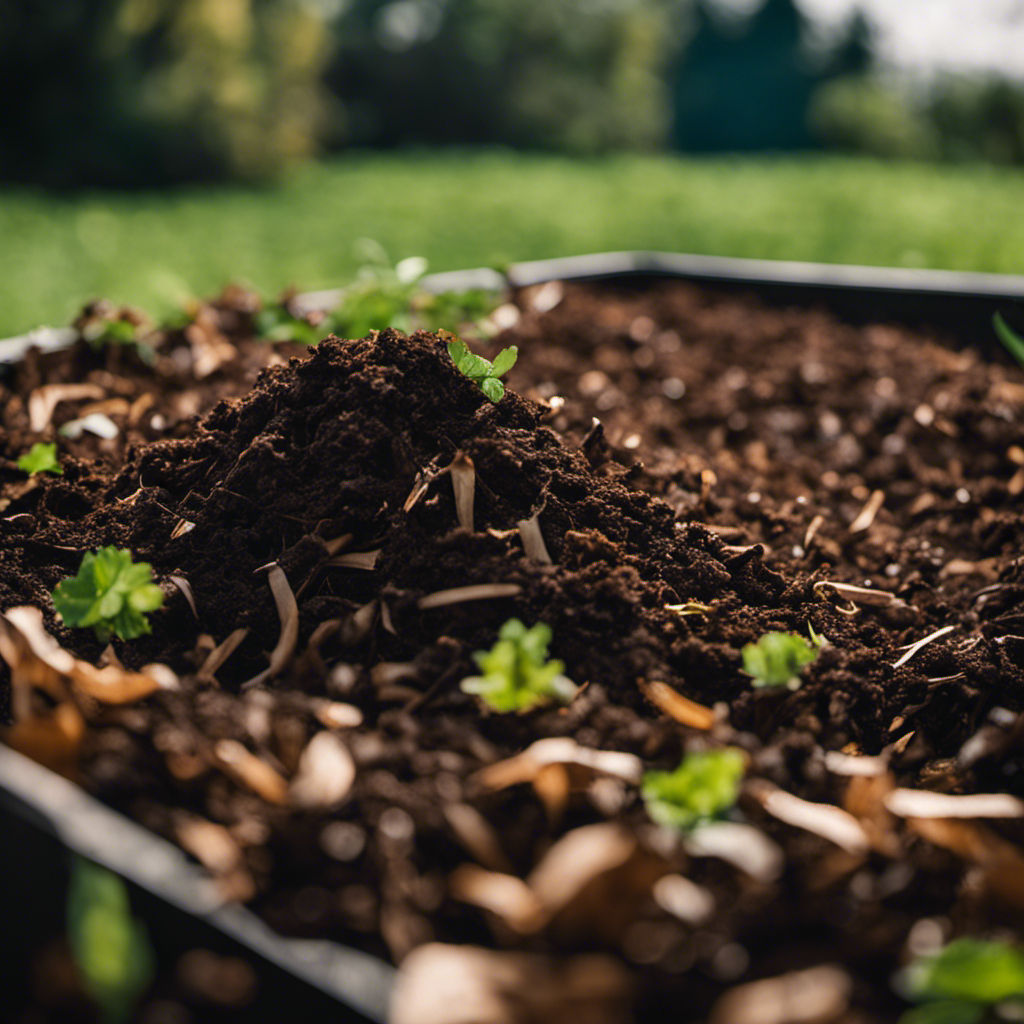
Combining mulching and composting is a simple and effective way to improve soil health and support sustainable agriculture. Mulching offers benefits beyond weed control and moisture retention. It also contributes to nutrient cycling and enhances soil fertility. By layering organic materials like leaves, straw, or grass clippings on the soil surface, we create a protective barrier that helps retain moisture, regulate soil temperature, and prevent erosion. As these materials break down, they enrich the soil with organic matter, improving its structure and nutrient content.
There are misconceptions about composting that need clarification. While some may think it’s complicated and time-consuming, composting can actually be quite straightforward. It involves mixing organic waste, such as kitchen scraps and yard trimmings, with water and air. Beneficial microorganisms then break down the organic matter into nutrient-rich compost.
By combining mulching and composting, we can establish a closed-loop system that maximizes the benefits for our soil. Mulch acts as a protective layer, while compost enriches the soil with essential nutrients. Together, they create a healthy environment for plant growth, reducing the reliance on synthetic fertilizers and pesticides.
This approach not only benefits the soil and plants but also promotes sustainable agriculture practices that prioritize environmental stewardship and long-term soil health.
Conclusion
In the world of organic farming, composting is often seen as the more adventurous side of agriculture. Farmers are always looking for innovative ways to transform waste into nutrient-rich soil, from traditional methods to vermicomposting and bokashi systems.
While mulching and composting may appear to be a straightforward solution, the process is far from simple. It involves getting dirty, dealing with unpleasant odors, and dedicating a significant amount of time. However, the benefits of having a healthy and sustainable farm make all the effort worthwhile.
So, the next time you see a farmer knee-deep in compost, remember that they’re embracing the more unconventional aspects of their work.

